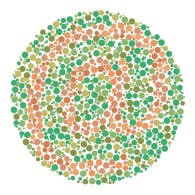
To paraphrase most dictionaries, reality is what appears to our senses not our thoughts. Knowing this difference is important since many people mistakenly live their lives in the virtual reality of their thoughts, missing out on the lived experience of their humanity. Because all concepts, which include all words and thoughts, are used to signal differences (“man” vs. “woman”), life lived in a virtual reality is characterized by separation, distortion, and alienation. Distortion occurs from the fact that words only convey categories, not particulars, despite the fact that everything in the world is specific. And because distortion and alienation beget fear, the best survival tools become anger and greed. However, these negative emotions all produce behaviors that harm others. In this way, life within the virtual world is distorted, confusing and stressful for everyone.
The purpose of mindfulness meditation is to return to live in the real world. All meditations are methods to return to reality from whatever thought-based, virtual reality one has mistakenly created. Methods, like mentally repeating or verbally chanting a nonsense word or continuously attending to the experiential nature of the muscles that make each breath rise and fall, all work to keep the mind attentive to direct experience and restrained from producing non-voluntary, conceptual thought. Conditioned to the apparent helpfulness of language, the strong tendency to engage in non-voluntary thinking usually overwhelms everyone’s ability to stay focused on direct experience. Practicing any form of attentiveness, like hearing sound without interpreting it, improves this capability. No one can pay attention and create thoughts at the same time. The main effect of mindfulness results from correcting the imbalance about how we use information and make assessments based on it. All benefits, including pain, anxiety and stress reduction as well as the mental clarity required for optimal decision-making and superior reality testing, arise from this.
Neuroscience, psychology and behavioral economics research studies all suggest humans have two ways of processing information: 1. One requires concepts, words and thoughts, like “lamp,” “arithmetic,” and “friendly,” and 2. One uses percepts, like sound (e.g., middle C on a piano), color (e.g., the redness of a painted door), temperature (e.g., coldness when asleep at night), etc.
Humans use the formal rules of logic and concepts for purposeful thinking. Concepts and logic have been helpful to humankind, for example helping with the design and construction of a new bridge. But words have significant limitations because they transform reality from its original condition. Words are unable to describe any sensory-perceptual experience, which is primarily how we know the world. For example, no one can tell someone who has been blind from birth anything about redness. Further, words also fail to express anything specific, like a “lamp,” or “justice,” “gender,” or even “self-identity” (i.e., who we are). It only works with categories. The particular lamp on my desk is a specific item in the category of lamps yet there is no way to say exactly what it is—a name or location cannot be used since they are not inherent to the lamp. As for broad concepts like “justice,” “gender,” and “self-identity,” words have always failed to deliver precise definitions. That’s why modifiers and operational definitions, like “unequal justice,” “psychological gender,” and “soccer mom,” were invented. But they do not get us closer to the truth. Concepts deliver imperfect information about our experience and particular aspects about the world around us. It’s a grave mistake, though, to take them as truths—as those who live in virtual reality must do.
But, humans need not “think” using words in the mind to cope with most daily challenges. Perceptual processing works well. Because percepts have not been transformed into concepts we cannot understand them by using logic. This is limitation of conceptual processing. Even though they are hidden to our thinking, we know percepts are useful bits of information because we can see the results of their use. We don’t think when we apply brakes at the right force, assess the worth of a painting, pull the covers over us at night when we’re too cold, or compare hundreds of shades of redness and successfully match a sample to the original.
Because of language, people tend to favor logical, conceptual explanations for the basis of their actions. For example, all points of philosophy and law are argued and decided based on concepts. In doing so, however, the failings of language must be either overlooked or trivialized. But, most of philosophy and the law, like ethics and rights, are focused on the person, though no one is exactly sure just who a person is. The term self-identity remains a conceptual puzzle. Can the stance of being a soccer mom, the holding of a national passport, or having a physical human body meet the requirements of a personal self-identity? No, they cannot. None meet the test for unchanging continuity. All conceptualized self-identities fail this test.
Insight into this question of self-identity may be gained from the view of perceptual information processing. To begin with, however, one must remember that concepts do not exist within this view. So, like every word, the term “self-identity” also has no meaning or relevance within the view from perceptual experience. What can be said about it then if concepts do not apply? Well nothing really. Except that from the view of perceptual experience, when it’s uncontaminated by any concepts, there can only be authenticity, continuity, intelligence, and not a hint of alienation or distortion. “You” might try it on—by being mindful as much as possible.
